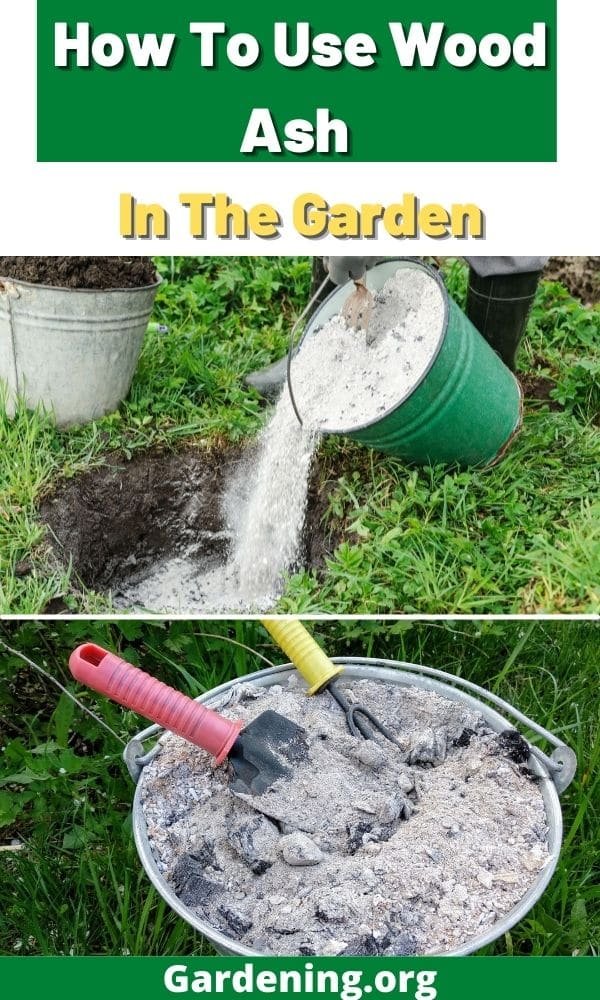Practical Uses For Wood Ash: What To Do With Wood Ash

Transforming a commonplace byproduct into a treasure trove of possibilities is the magic of knowing what to do with wood ash. Sprinkling this fine powder onto your garden beds can enrich the soil and boost plant growth. Mix it with a bit of water to create a natural pest-repellent spray, safeguarding your plants against unwanted visitors. Keep reading to discover the myriad uses for this underrated resource!
Discovering the Benefits of Wood Ash: What to Do with Wood Ash
Welcome, curious minds! If you’ve ever wondered what to do with the ash left over after cozy bonfires or wood-fired stoves, you’re in for a treat. Wood ash is not just a waste product but a hidden gem that can be incredibly useful around your home and garden. In this article, we will explore the various ways you can make the most of wood ash and turn it into a valuable resource. Let’s dive in!
The Basics of Wood Ash
Before we delve into the exciting possibilities of wood ash, let’s first understand what it is. Wood ash is the powdery residue left behind after burning wood. It is composed mainly of calcium carbonate, potash, and other minerals that were once present in the wood. This seemingly mundane substance actually packs a powerful punch when it comes to its uses.
Fertilizing Your Garden with Wood Ash
One of the most popular ways to use wood ash is as a natural fertilizer for your garden. The minerals present in wood ash, such as potassium and calcium, can help improve soil quality and promote plant growth. To use wood ash as a fertilizer, sprinkle it lightly over your garden soil and mix it in. Be cautious not to overdo it, as excessive amounts of ash can raise the pH level of the soil too much.
Benefits of Using Wood Ash as Fertilizer
Wood ash not only provides essential nutrients to plants but also helps repel pests like snails and slugs due to its abrasive texture. Additionally, the alkaline properties of wood ash can neutralize acidic soils, making it ideal for plants that thrive in slightly alkaline conditions.
Enhancing Compost with Wood Ash
Composting is a fantastic way to reduce waste and create nutrient-rich soil for your garden. Adding wood ash to your compost pile can help balance the pH levels and speed up the decomposition process. When layering your compost, sprinkle a thin layer of wood ash between the organic materials to boost microbial activity and create a healthy environment for decomposition.
Tips for Using Wood Ash in Compost
Remember to use wood ash in moderation in your compost pile, as too much ash can harm beneficial organisms and plants. Aim to maintain a good balance between green and brown materials, with wood ash serving as an occasional supplement to boost the process.
Protecting Plants from Pests with Wood Ash
In addition to its fertilizing properties, wood ash can also act as a natural pest deterrent in your garden. Sprinkling a ring of wood ash around vulnerable plants can create a barrier that pests like slugs, snails, and even aphids are hesitant to cross. Reapply the ash after rain or watering to maintain its effectiveness.
Cautionary Note:
While wood ash can be beneficial in deterring pests, it should not be used directly on plants that prefer acidic soil, as it can alter the pH balance unfavorably. Always do a soil test before applying wood ash to ensure it aligns with your plants’ specific needs.
Improving Traction on Icy Surfaces
As the colder months approach, wood ash can come in handy for improving traction on icy walkways and driveways. Sprinkling wood ash on icy surfaces can provide traction and help prevent slips and falls. The gritty texture of the ash creates a rough surface that enhances grip, making it safer to navigate slippery areas.
Best Practices for Using Wood Ash for Traction
When using wood ash for traction, be mindful of where you apply it. Avoid spreading ash near plants or bodies of water, as excessive runoff can harm aquatic life. Additionally, use ash sparingly and only in areas where traction is needed to minimize environmental impact.
Creating Natural Cleaning Products with Wood Ash
Believe it or not, wood ash can also be repurposed to make natural cleaning products for your home. Mix wood ash with water to create a paste that can be used to scrub and clean surfaces like grills, ovens, and even stained pots and pans. The abrasive nature of wood ash can help remove tough stains and grease effectively.
Precautions for Using Wood Ash as a Cleaner
When using wood ash as a cleaning agent, be cautious not to use it on delicate surfaces that may scratch easily. Test a small area first to ensure it does not damage the material. Additionally, wear gloves and a mask when handling wood ash to protect your skin and respiratory system.
Conclusion: Embracing the Versatility of Wood Ash
As we’ve discovered, wood ash is far from being just a byproduct of fire. Its rich mineral content and versatile properties make it a valuable resource for various purposes, from gardening and composting to pest control and cleaning. By incorporating wood ash into your daily life, you not only reduce waste but also harness the natural benefits it has to offer. So, the next time you have a pile of wood ash on hand, remember the endless possibilities it holds and get creative with how you can put it to good use!
Here’s to embracing the hidden potential of wood ash and making the most of this humble yet remarkable substance. Happy experimenting!
10 Things You Can Do With Firewood Ash
Frequently Asked Questions
What are some ways to reuse wood ash?
Wood ash can be used in various beneficial ways around the house and garden. You can use it as a natural fertilizer for plants, particularly those that prefer alkaline soil like tomatoes and lilacs. Additionally, wood ash is known to help repel pests such as slugs and snails when sprinkled around the garden.
Can wood ash be used for cleaning purposes?
Yes, wood ash can be used as a natural cleaning agent. It contains alkaline properties that make it effective for scrubbing and polishing tasks. You can mix wood ash with water or oil to create a paste for cleaning surfaces like glass, metal, and even stained pots and pans.
Is it safe to use wood ash in compost?
Wood ash can be a valuable addition to compost piles when used in moderation. It helps raise the pH level of acidic compost, balancing it for healthier decomposition. However, it’s important not to overwhelm the compost with too much ash, as excessive amounts can harm beneficial microorganisms and plants.
Final Thoughts
In conclusion, wood ash can be used in various ways around the house and garden. It serves as a natural fertilizer, pest repellent, and even a cleaning agent. When properly utilized, wood ash can enhance plant growth, deter pests, and help maintain a clean household. So, instead of throwing it away, consider what to do with wood ash to make the most of this versatile byproduct.







